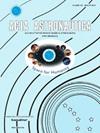斯图加特大学的太空系绳研究
IF 3.1
2区 物理与天体物理
Q1 ENGINEERING, AEROSPACE
引用次数: 0
摘要
该大学的空间系留研究活动可追溯到 20 世纪 90 年代。首批研究项目调查了系留辅助有效载荷返回舱从空间站重返大气层的情况。系留研究于2015年恢复,重点是系留行星探索漫游车的应用,以微型漫游车Nanokhod为基础。这包括坚固耐用、高度集成和微型化的系绳和系绳线轴系统,这些系统专门适用于具有挑战性的月球环境和尘埃条件。为此,开发和测试了几个原型,并建立了系绳-尘埃测试设施。此外,还通过创建模拟框架、跟踪算法和用于验证算法的低保真测试台,在系绳检测方面取得了进展。在行星系绳应用经验的基础上,斯图加特大学的研究在 2022 年扩展到系绳卫星系统,利用系绳卷绕技术。作为教育活动的一部分,与学生一起对系留立方体卫星任务进行了深入研究,包括系留交会能力和电动系留操作。此外,还开发了光学探测和跟踪有效载荷的面包板模型,用于在系绳完全展开 100 米的情况下跟踪立方体卫星大小的物体。目前正在进行其他子系统的开发,巩固任务研究以及系留卫星系统动态分析和模拟的成果。与此同时,还建立了第三个系留应用研究领域,研究如何为月球探测任务创建基于系留的空间飞行基础设施。对将大型有效载荷从低地球轨道转移到月球转移轨道的动量交换系留系统进行了概念研究,并起草了可行的系留系统配置。确定了各种技术和操作挑战,这些挑战目前是斯图加特大学正在进行的动量交换系绳研究的重点。本文章由计算机程序翻译,如有差异,请以英文原文为准。
Space tether research at the University of Stuttgart
Space tether research activities at the University date back to the 1990s. First research projects investigated tether-assisted re-entry of payload return capsules from space stations. Tether research was resumed in 2015 focusing on the application of tethered planetary exploration rovers, based on the micro-rover Nanokhod. This includes robust, highly-integrated and miniaturised tethers and tether spooling systems, which are specifically adapted to the challenging lunar environmental and dust conditions. For this, several prototypes were developed and tested and a tether-dust testing facility was setup. In addition, developments have been made in the tether detection by creating a simulation framework, tracking algorithms and low-fidelity test bench for the verification of the algorithms. Based on the experience of the planetary tether applications, the research at the University of Stuttgart was expanded to Tethered Satellite Systems in 2022, utilising the tether spooling technology. In-depth studies on tethered CubeSat missions were developed together with students as part of educational activities, including tethered rendezvous capabilities and electrodynamic tether operation. In addition, breadboard models of optical detection and tracking payloads were developed for tracking a CubeSat sized object at full tether deployment of 100m. Additional subsystem development is currently in progress, consolidating the results of the mission studies, as well as dynamic analyses and simulations of the tethered satellite system. Concurrently, a third tether application research area was established, looking into studies for creating tether-based spaceflight infrastructure for lunar exploration missions. A concept study of a Momentum Exchange Tether system to transfer large payloads from Low Earth Orbit to a lunar transfer orbit was conducted and feasible tether system configurations were drafted. Various technological and operational challenges were identified and are now the focus of ongoing Momentum Exchange Tether research at the University of Stuttgart.
求助全文
通过发布文献求助,成功后即可免费获取论文全文。
去求助
来源期刊

Acta Astronautica
工程技术-工程:宇航
CiteScore
7.20
自引率
22.90%
发文量
599
审稿时长
53 days
期刊介绍:
Acta Astronautica is sponsored by the International Academy of Astronautics. Content is based on original contributions in all fields of basic, engineering, life and social space sciences and of space technology related to:
The peaceful scientific exploration of space,
Its exploitation for human welfare and progress,
Conception, design, development and operation of space-borne and Earth-based systems,
In addition to regular issues, the journal publishes selected proceedings of the annual International Astronautical Congress (IAC), transactions of the IAA and special issues on topics of current interest, such as microgravity, space station technology, geostationary orbits, and space economics. Other subject areas include satellite technology, space transportation and communications, space energy, power and propulsion, astrodynamics, extraterrestrial intelligence and Earth observations.
 求助内容:
求助内容: 应助结果提醒方式:
应助结果提醒方式:


